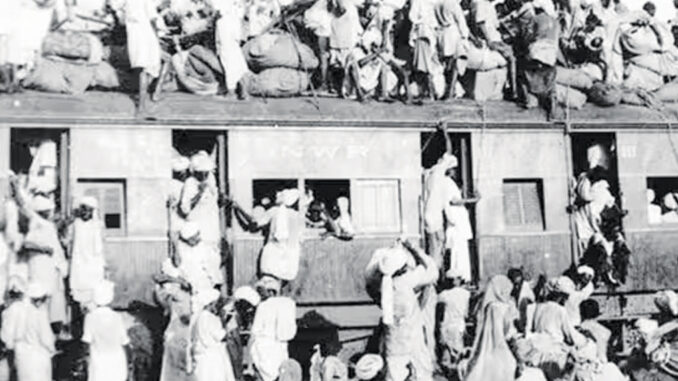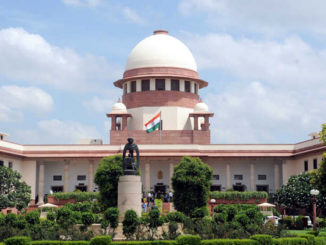
In ancient times, people from all over the world were keen to come to India. The Persians followed by the Iranians and Parsis immigrated to India. Then came the Moghuls and they too settled down permanently in India. Chengis Khan, the Mongolian, invaded and looted India many times. Alexander the Great too, came to conquer India but went back after a battle with Porus. He-en Tsang from China came in pursuit of knowledge and to visit the ancient Indian universities of Nalanda and Takshila. Columbus wanted to come to India, but instead landed on the shores of America. Vasco da Gama from Portugal came to trade his country’s goods in return for Indian spices. The French came and established their colonies in India.
Lastly, the Britishers came and ruled over India for nearly 200 years. After the battle of Plassey in 1757, the British achieved political power in India. And their paramountcy was established during the tenure of Lord Dalhousie, who became the Governor- General in 1848. He annexed Punjab, Peshawar and the Pathan tribes in the north-west of India. And by 1856, the British conquest and its authority were firmly established. And while the British power gained its heights during the middle of the 19th century, the discontent of the local rulers, the peasantry, the intellectuals, common masses as also of the soldiers who became unemployed due to the disbanding of the armies of various states that were annexed by the British, became widespread. This soon broke out into a revolt which assumed the dimensions of the 1857 Mutiny.
The Indian Independence Movement incorporated the efforts by Indians to liberate the region from British, French and Portuguese and form the nation-state of India. It involved a wide spectrum of Indian political organizations, philosophies, and rebellions between 1857 and India’s emergence as an unified nation-state on August 15, 1947.
Revolt of 1857
Also called India’s first war of independence, it began at Meerut on May 10, 1857, and slowly spread across Delhi, Agra, Kanpur and Lucknow.
It was the first significant uprising against the East India Company. Although the Revolt was unsuccessful, it had a significant impact on the masses and inspired India’s entire Independence Movement.
It was the revolt of 1857 which gave a clear message to the British Crown that the East India Company had failed to exercise control over the country, demonstrating its incapacity.
The British East India Company’s control came to an end with this fight for independence.
After the British Crown seized control of India from the East India Company in 1858, it became a British colony in law. Following this, India was directly governed by the British government through governors general.
Swadeshi Movement – 1905-1911
The Swadeshi Movement was a consequence of Lord Curzon’s announcement for the partition of Bengal in 1905, on the grounds that the population of Bengal as a whole would be difficult to govern over.
However, the British declared the division of Bengal into two provinces with the intention of undermining nationalist unity.
The “Boycott” resolution was adopted at a conference held at the Calcutta Town Hall on August 7, 1905, thus establishing the Swadeshi movement and bringing its previously fragmented leadership under one leadership.
The goal of the Swadeshi movement was to encourage the usage of local goods and services while denouncing their British counterparts. This raised India’s economic standing and demonstrated to the British that Indians could live independently.
When British products were openly torched, this movement became violent. The British started detaining the agitators to address this issue, and ultimately Bengal was partitioned.
The Swadeshi Movement was a turning point in Indian history because it demonstrated the nation’s unity and helped people see that they could defeat the British if they united.
Ghadhar Movement- 1914-1917
The Ghadar Movement was a significant turning point in India’s quest for independence. Early in the 20th century, a number of stringent immigration laws based on racial discrimination were put in place to reduce the number of Indian immigrants coming to Canada in search of employment.
Komagata Maru Incident: A ship from Canada by the name of Komagatamaru that was carrying immigrants from India was sent back. Several of the ship’s passengers were killed or detained in a clash with the British police as it headed back to India. The Komagata Maru episode attracted worldwide attention and condemnation for the violation of human rights and racism. The episode further inspired the Ghadar party to engage in its struggle against colonial rule, and therefore it indirectly gave a fillip to the Indian struggle for freedom.
After the brutal British repression, the Ghadar Movement started to wane. 1917 saw the Ghadar Party split into a Communist and a Socialist faction following the end of World War I.
The Ghadar movement might be characterised as a story of extraordinary bravery, labour and toil that affected every Indian living in foreign countries.
The powerful speeches by its leaders did shape the expatriate opinion against the misrule of the British in India.
It truly qualifies as a major struggle which aroused the people to fight for freedom and sowed seeds for any other future course of action.
Home Rule Movement – 1916-18
Home Rule Movement served as the country’s response to the First World War and a powerful means to express opposition to British rule.
Home Rule Movement was started by Bal Gangadhar Tilak at Belgaum in April 1916 and later by Annie Besant in Madras in September 1916.
This movement was targeted at achieving self-rule, without the interference of the British Government.
Movement sought to demonstrate the strength of India and its people by raising political awareness and assembling a bigger political representation for the nation in opposition to British Rule.
This movement resulted in the 1917 Montague Declaration, which said that there would be a greater representation of Indians in the administration, fostering the growth of institutions for self-governance and finally bringing about responsible governments in India.
Champaran Satyagrah – 1917
Champaran Movement was Mahatma Gandhi’s first act of civil disobedience during the struggle for independence, which took place in the Bihar region of Champaran in 1917.
Gandhi was persuaded by an indigo farmer, Rajkumar Shukla, to visit Champaran to look into the plight of the farmers, who were subjected to oppressive regulations and high taxes. Under the tinkathia system, they were compelled to grow indigo by the British colonists.
Gandhi gathered support from the local farmers and masses to organise nonviolent protests against planters and landlords, and as a result, the government decided to do away with the oppressive tinkathia system. Additionally, the peasants were compensated with a part of the money taken from them.
Gandhi organised three protests in Champaran, Ahmedabad and Kheda during the years 1917 and 1918, before beginning the Rowlatt Satyagraha.
Although the Champaran Satyagraha was the first to be organised, the term ‘Satyagraha’ was first used during the anti-Rowlatt Act protest, which means, a non-violent method of protest.
Rowlatt Satyagraha- 1919
The Anarchical and Revolutionary Crimes Act of 1919, passed by the British Indian government, was more often known as the Rowlatt Act.
The Act granted the government the authority to imprison anyone accused of engaging in terror activities for up to two years without a trial. The freedom of the press was likewise severely restricted by the Rowlatt Act.
Mahatma Gandhi began a non-violent Satyagraha on April 6, 1919, to protest against the British government’s unfair Rowlatt Act, which was called the Rowlatt Satyagraha.
A nationwide hartal was declared and people were asked to hold meetings against the repressive act and refrain from going to work.
While the hartal was successful in Delhi, violence was witnessed in Punjab and a few other places. Therefore, Gandhi suspended the hartal in the wake of the violence.
The infamous Jallianwala Bagh massacre, which took place in Amritsar on 13th April 1919, was also the result of the protest against the Rowlatt Act. This incident was a great reason for Indians to struggle for India’s independence even harder.
Khilafat and Non- Cooperation
Movement – 1920
Khilafat Movement: The Indian Muslims were not happy with the way the British dethroned the Caliph in Turkey. So, in 1919, various protests were held against the Britishers. The Muslim League and Congress came together during this time. Both of these parties worked together to organise numerous political protests. The movement was initially introduced on August 31, 1920, when the Khilafat Committee began a campaign of non-cooperation.
The Indian National Congress (INC), led by Mahatma Gandhi, began the Non-Cooperation Movement on September 5, 1920. The Non-Cooperation Movement is one of the key movements in India’s independence struggle. It was initiated by Gandhi in support of the Khilafat Movement.
The aim was to boycott major social programmes, events, offices and schools to resonate with India’s struggle for independence. In his declaration Gandhi, wanted people to adopt Swadeshi principles and work for the eradication of untouchability from society.
The open, non-violent protest against the government by thousands of Indians was a true mass movement.
The Indian National Congress called for self-government or Swarajya and only non-violent methods were asked to be used while protesting
However, following the Chauri Chaura incident in February 1922, where during a fight between the police and protesters a violent crowd set fire to a police station, killing 22 policemen, Gandhiji decided to put an end to the movement.
Civil Disobedience Movement – 1930
Mahatma Gandhi led a non-violent Civil Disobedience Movement in colonial India known as the Salt March, also known as the Salt Satyagraha, the Dandi March, and the Dandi Satyagraha.
By 1930, the Congress Party had announced that the only goal of the liberation movement should be Poorna Swarajya or total independence. The 26 January 1930 was declared Poorna Swarajya Day.
The movement began in 1930 after Indians became angered when the British imposed a tax on the sale and collection of salt, and Gandhiji chose to break the salt tax in defiance of the government.
On March 12, 1930, Mahatama Gandhi led a large group of people from Sabarmati Ashram to Dandi, a seaside town in Gujarat, where they produced salt from seawater in violation of the law.
More than 60,000 individuals were detained as the movement swept across the nation, including Mahatma Gandhi.
When Gandhiji was finally allowed to leave prison in 1931, he met with Lord Irwin, who was keen to put a stop to the civil disobedience movement and the media attention it had garnered.
The Gandhi-Irwin Pact stipulated that the civil disobedience campaign would be put an end to in exchange for allowing Indians to produce salt for household use. Lord Irwin also consented to the Indians’ detention being lifted. Gandhiji participated in the London Second Round Table Conference as a “equal.”
Quit India Movement – 1942
The INC called for a widespread civil disobedience movement when the Cripps Mission, which arrived in India in March 1942, was unable to promise any type of constitutional remedy for India’s issues.
The idea of an independence movement in India was accepted by the Congress Working Committee at its Wardha meeting on July 14, 1942.
Gandhi began this movement in August 1942 in an effort to compel the British to leave India. This campaign, known as the “Bharat Chhodo Andolan,” compelled the British colonial authorities to consider leaving India.
The outcome of the movement was that Congress was declared an unlawful association and its offices all over the country were raided. The leaders were arrested and there rose a chaotic moment with this incident.
Despite heavy-handed suppression by the government, the people were unfazed and continued their struggle.
The movement placed the demand for complete independence at the top agenda of the freedom movement.
Independence, 1947 to 1950
On 3 June 1947, Viscount Lord Louis Mountbatten, the last British Governor-General of India, announced the partitioning of the British Indian Empire into a secular India and a Muslim Pakistan. At midnight, on 15 August 1947, India became an independent nation. Violent clashes between Hindus, Muslims, and Sikhs followed. Prime Minister Nehru and Deputy Prime Minister Sardar Vallabhbhai Patel invited Lord Mountbatten to continue as Governor General of India. He was replaced in June 1948 by Chakravarti Rajagopalachari. Patel took on the responsibility of unifying 565 princely states, steering efforts by his “iron fist in a velvet glove” policies, exemplified by the use of military force to integrate Junagadh, Jammu and Kashmir, and Hyderabad state into India.
The Constituent Assembly completed the work of drafting the constitution on 26 November 1949; on 26 January 1950 the Republic of India was officially proclaimed. The Constituent Assembly elected Dr. Rajendra Prasad as the first President of India, taking over from Governor General Rajgopalachari. Subsequently, a free and sovereign India absorbed two other territories: Goa (liberated from Portuguese control in 1961) and Pondicherry (which the French ceded in 1953–1954). In 1952, India held its first general elections, with a voter turnout exceeding 62%; this made it the world’s largest democracy.





323642 377756cleaning supplies should have earth friendly organic ingredients so that they do not harm the environment 799340